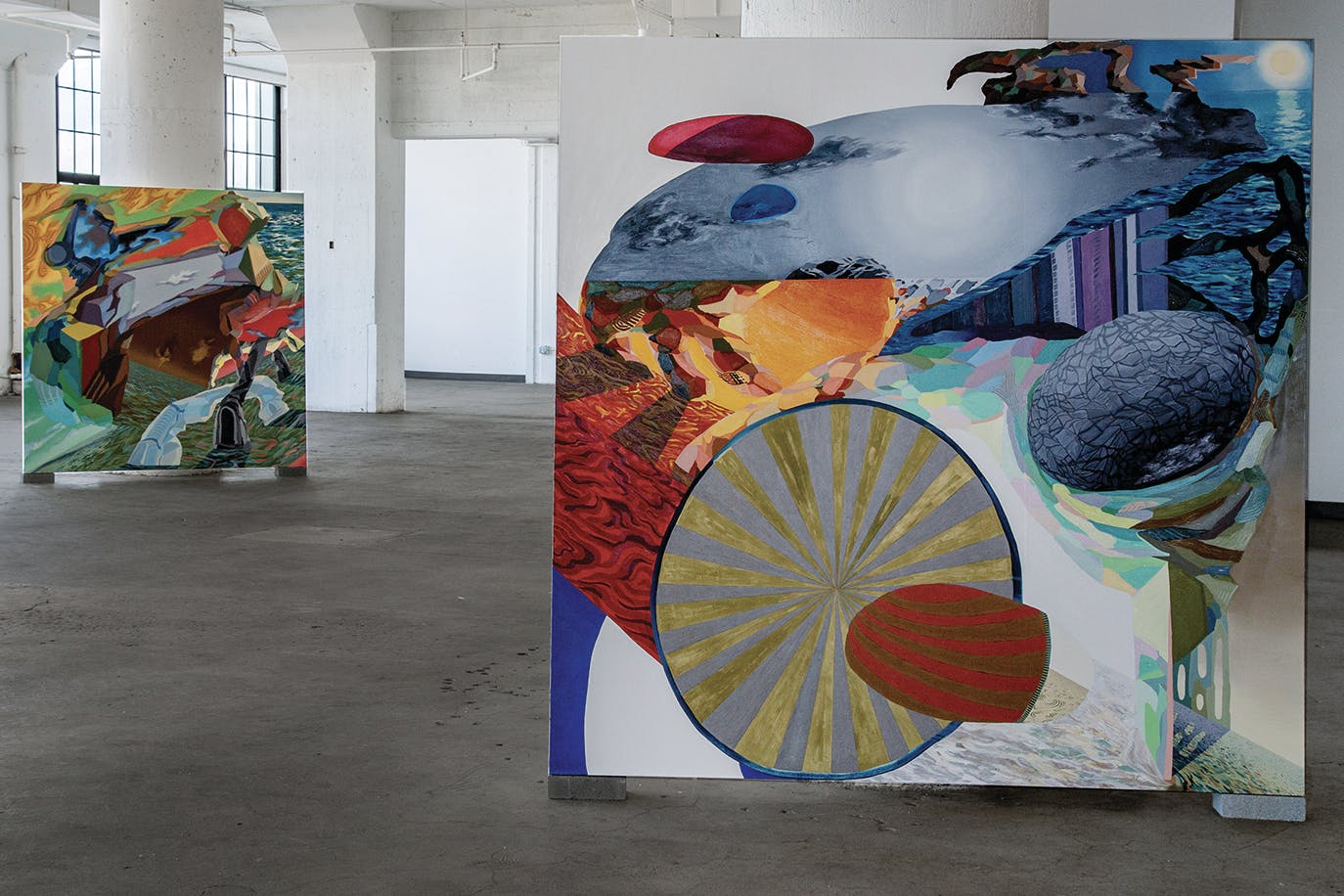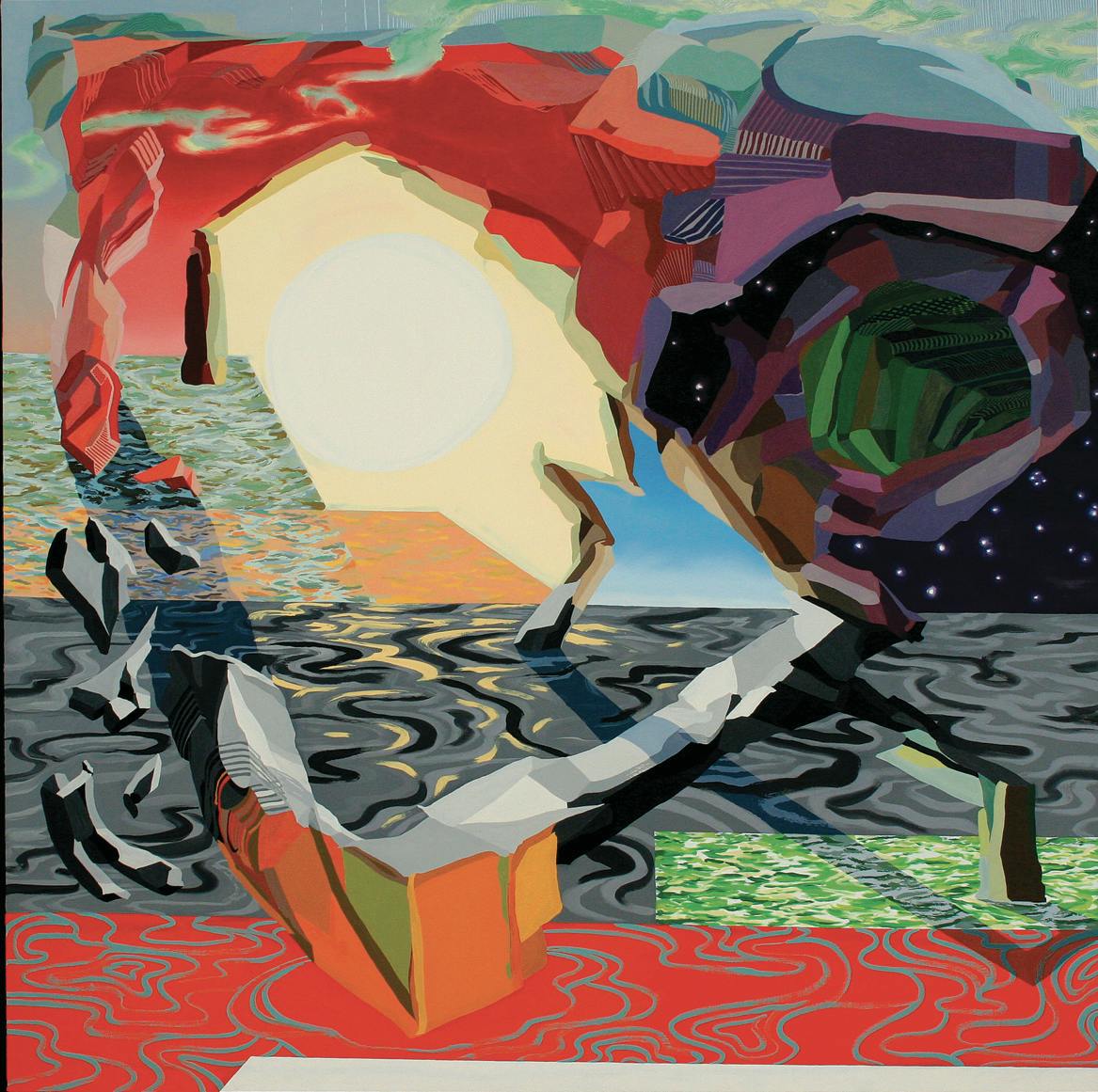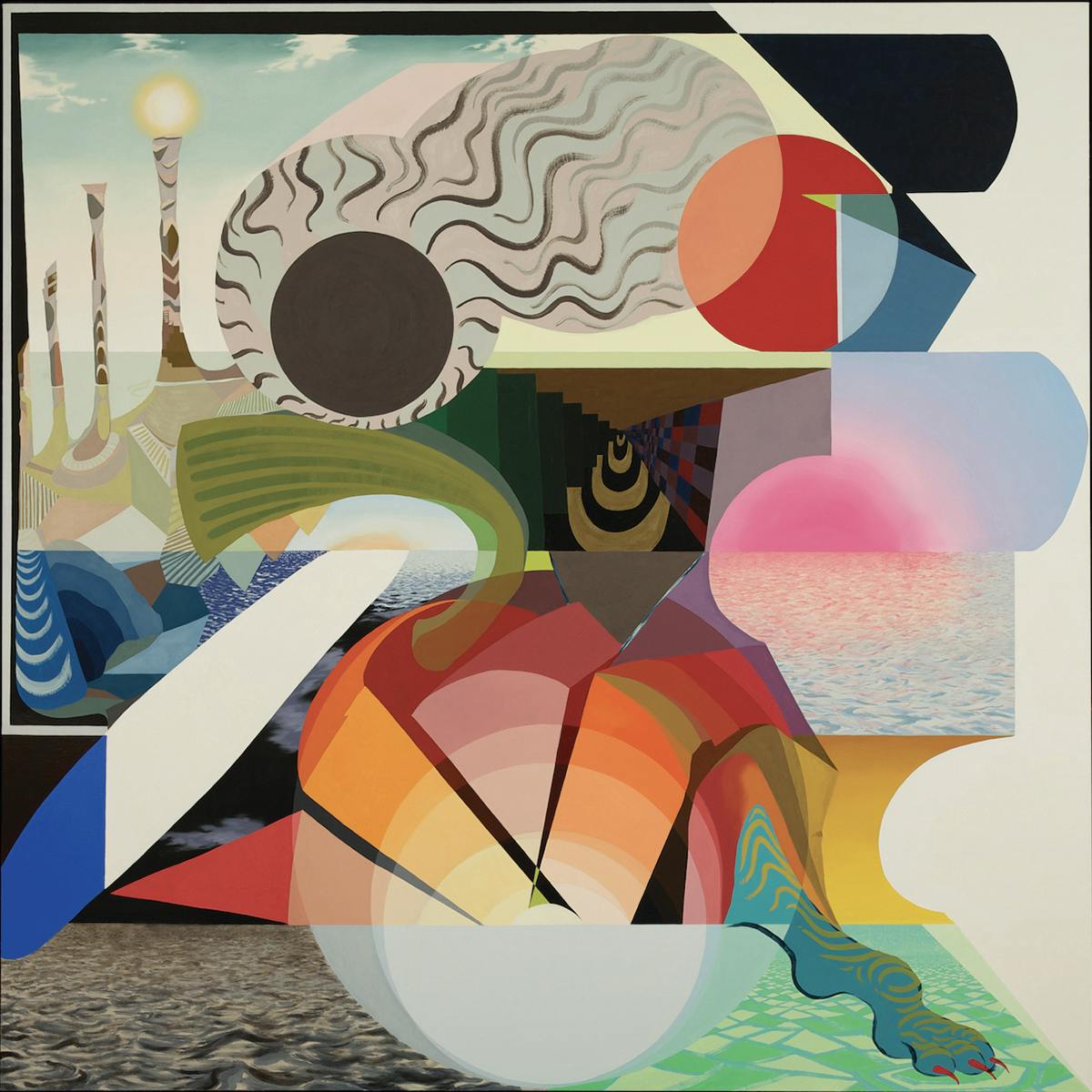The exhibition “Passing Islands,” featuring a body of work by Christopher Schade was organized by Boston-based curatorial duo Kari Adelaide and Max Razdow who collectively go by the name The Sphinx Northeast. While on view at Boston Design Center, the show presented many of the paintings as the exhibition title suggests, as passing islands. Oil paintings on canvas, some propped against thick white columns in the expansive venue, allowed for each painting to be viewed from various angles, not unlike an island—front and behind. Other smaller mixed media works were framed. What if islands were able to expose their bones, in this case the stretcher bars, that reveal layers of history bringing each landscape to fruition?
Schade had exhibited the majority of his island series prior in two consecutive shows both in Texas at Conduit Gallery in 2006 and D Berman Gallery in 2007. A group of 8 large-scale, colorful oil on canvas abstractions were made between 2003 and 2009, while the 7 mixed media drawings on paper range from 2008 to 2019.
In “Shifting Island,” 2003, one of the earliest oil on canvas works in the series, the artist made the smallest of gestures that turned out to be a catalyst for making more work. He altered the angle of the horizon line ever so slightly, outside of the realm of what we would see in a three-dimensional world. Inside the world of the painting, boats would not float on a flat plane but rather climb thirty percent skyward while sailing this painted sea. Yet there are no boats present. Instead, an unknown, unrecognizable shape emerges out of the water and projects itself skyward. Alien-like tentacles stretch between bulbous forms that could be part of an insect body, or swollen rocks. Either way, while striving to identify moments of representation, the painter dictates his own landscapes that seem to defy gravity. Utilizing various directions and channels, his brush moves purportedly or seemingly without a particular methodology however, the forms are solid, dividing the surface harmoniously through gestural marks. In a painting, an island can be invisible, floating, a portal, a moment bathed in sun or a surface exploding. It’s as if each painting asks us a rhetorical question: what does it mean to disrupt?
“You must live in the present, launch yourself on every wave,” stated the famed poet and philosopher Henry David Thoreau in 1859. “Fools stand on their island of opportunities and look toward another land. There is no other land; there is no other life but this.” While people of a particular spiritual or religious following may disagree, Thoreau encouraged those to rise to the occasion that is today. Not unlike the way a canvas creates a shore, the island of selfhood or that made between particular borders can be either isolating or full of color. In this case, Schade’s paintings on paper and canvas are filled with bold strokes and unexpected forms. His islands, may or may not be tenantable. They exist in a place of their own gravity, horizon and sense of time. While a viewer might yearn to identify particular shapes, such as a sun, a body of water, a stone, or a branch, much is open to interpretation and can at once be just paint. The island is a passing fragment of time, memory and perception.
The process of making the painted series on canvas had multiple lives that expanded over a series of seven years. The artist halted these large-scale iterations due to a family tragedy but continued their process and or where the process was starting to lead him, intermittently through the works on paper. In reducing the size, going from 6 foot square to roughly 9 1/2 inches by 8 3/4 inches, and the most recent being the smallest at 4 1/2 by 4 1/4 inches, he loses some of the vibrancy found on canvas but gains an immediacy that the larger-scale lacks. Yet the title of the most recent in the series, Sunset Island, feels like not only the closing of a day but the reminder that there is a new one right around the corner. While on view for a brief window of time, it provided just that, windows into an uncanny world of Schade’s own making.
The Sphinx Northeast have a curatorial practice delves into the unspoken spirituality of nature, silence, and mysticism and the aesthetic of “Passing Islands” fell into this arch of visual investigation. Kari Adelaide is curating “More Dusk Than Moth” at the SPRING/BREAK Art Show NYC 2020 along with Vanessa Albury and John Brooks. Christopher Schade’s work will be on view in “Love Match” at Drive-By Projects in Watertown from March 7th through April 25th.



